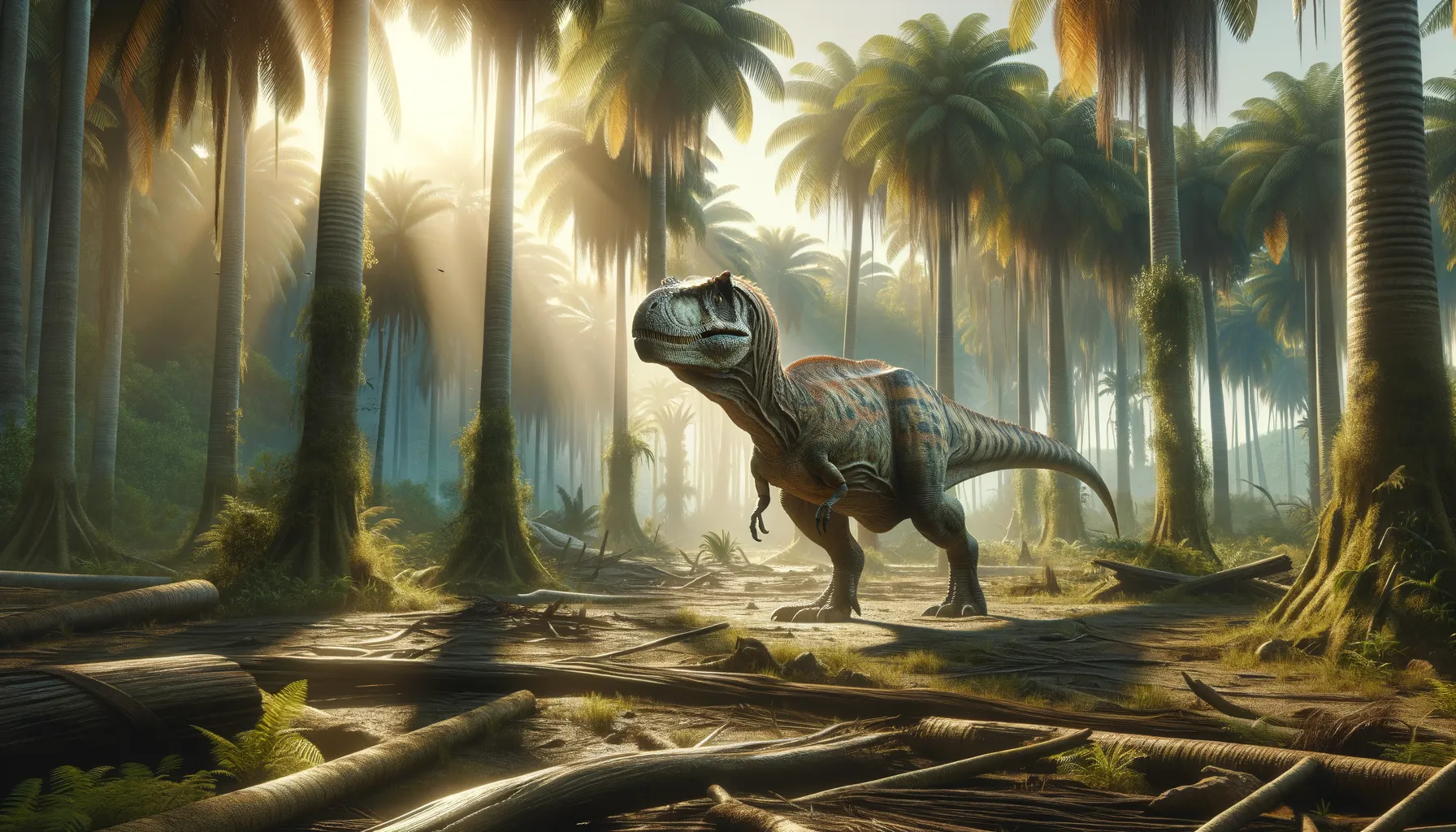
Tomodon
Master of Cretaceous Pursuits!
Period
Cretaceous
Length
Approximately 8 meters long.
Height
Around 3 meters tall at the hip.
Weight
Approximately 1,000 kilograms.
Tomodon was a predatory dinosaur that thrived during the Cretaceous period. Known for its formidable hunting skills, it prowled ancient ecosystems in what is now South America. Exhibiting theropod characteristics, it played a significant role in its environment both as a predator and scavenger. Its discovery provided crucial insights into the diversity of theropod dinosaurs in the southern hemisphere.
Diet
Tomodon was a carnivore, preying on smaller dinosaurs and possibly scavenging meals. Its diet included mammals and reptiles, relying on sharp teeth and robust jaws to capture and devour its prey.
Hunting
It employed ambush tactics, lying in wait to surprise its prey rather than engaging in long pursuits. Its built-for-speed physique enabled it to make swift attacks, relying on powerful hind legs to cover ground rapidly when needed.
Environmental challenges
Tomodon's environment posed numerous challenges, including fluctuating climates marked by seasonal changes. These conditions forced it to adapt its hunting techniques and feeding patterns. Competition with other predators for food resources was another significant challenge, necessitating strategic advantages in survival tactics. As vegetation and prey types varied over time, Tomodon's adaptability was key to thriving in dynamic ecosystems.
Speed
Moderate, adept at quick bursts for short distances.
Lifespan
Estimated to be around 20 to 30 years.
First discovery
Unearthed in South America in the late 19th century.
Fun Facts
- Tomodon was a unique theropod dinosaur known for its large, intimidating size and sharp teeth.
- Unlike many of its theropod cousins, Tomodon had a curious habit of eating plants, making it an omnivore.
- Fossils of Tomodon have been primarily found in the South American region, giving insights into the dinosaur life on the continent.
- One of the most fascinating features of Tomodon is its jaw structure, which allowed it to have a powerful bite.
- Tomodon lived during the late Cretaceous period, sharing its habitat with some of the most famous dinosaur species.
- Researchers believe Tomodon's feathers were likely used for display or temperature regulation rather than flight.
- Tomodon's name means 'cut tooth,' highlighting its sharp, distinct teeth which were quite the center of attention.
Growth and Development
Tomodon likely hatched from eggs and grew rapidly in its first few years, a common trait among theropods. Juveniles were vulnerable to predation, so rapid growth helped them escape this vulnerable stage. As it matured, it developed more powerful muscles and denser bones, allowing it to take on larger prey. Social behaviors played a part in its development, with possible family groups aiding juvenile survival.
Habitat
Tomodon inhabited lush, tropical regions with dense forests providing cover and ambush opportunities. Rivers and lakes were common features, supporting diverse ecosystems that included various prey items. This dinosaur favored environments that allowed it to exploit its ambush predation method effectively. The fluctuating climate led to a variety of plant life, influencing the distribution and population dynamics of its prey species.
Interaction with other species
Tomodon likely competed with other carnivorous dinosaurs for prey, leading to potentially aggressive encounters. While solitary in hunting, interactions might occur at kill sites, necessitating displays of dominance. Smaller herbivorous dinosaurs in its territory may have developed behaviors to avoid detection by Tomodon. Scavenging potential leftovers from larger predators' kills also formed part of its ecological interactions.
Natural lifespan
Its natural lifespan was likely around 20 to 30 years.
Reproduction
Tomodon reproduced through egg-laying, likely constructing nests in protected areas. Females might have shared incubation duties, increasing the chances of hatchling survival. Hatchlings required care and protection during the early stages, potentially forming small family groups. Nest sites were chosen strategically to minimize risk from predators and environmental threats.
Social behaviour
Though primarily solitary, Tomodon might have engaged in limited social interactions during certain activities like mating. Displays of dominance and territory marking were possible behaviors to establish hierarchy and control hunting grounds. Aggressive encounters were likely between males during the mating season. While not pack hunters, shared scavenging sites could facilitate brief social interactions.
Fossil locations
Fossils of Tomodon have been discovered primarily in South America, with notable sites in Argentina. These fossils provide valuable insights into its anatomy and ecological role. The discoveries have contributed to the understanding of theropod diversity and distribution in the southern continents. Ongoing excavations continue to uncover more specimens, expanding knowledge on this predatory dinosaur.
